
| Photos From Wyoming Tales and Trails This Page: Thermopolis |
 |

| Photos From Wyoming Tales and Trails This Page: Thermopolis |
 |
|
|
|
About This Site |
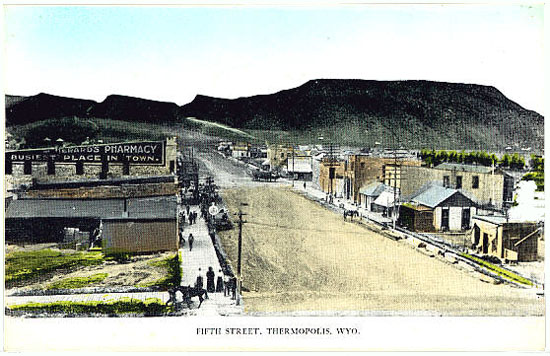 Fifth Street, Thermopolis, 1908
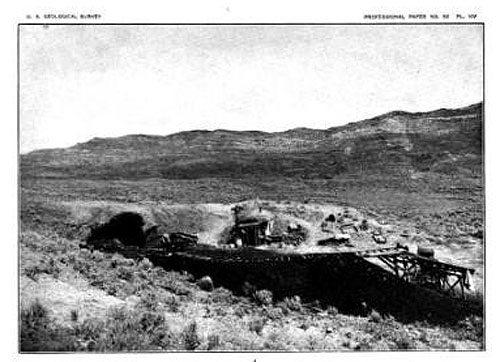 McDonald and Cottle mine, 1903. During December, 1917, we received complaints from the operators in Hot Springs County that the saloons at the coal mines were open day and night, demoralizing the labor force and causing a decrease in production. We requested Col. George M. Sliney, Fuel Administrator for Hot Springs County, to investigate and do everything possible to regulate the disturbing element. Colonel Sliney took vigorous action and regulations were passed by both the Civic and County Authorities closing the saloons from 11:00 P.M. to 7:00 A.M. and all day on Sundays. This had the desired effect for a time but it was necessary to continously guard against the abuse of liquor causing a decrease in production. The mines in Hot Springs County are located in a bleak and desolate section, practically a desert, and opportunities for amusement and recreation are limited. 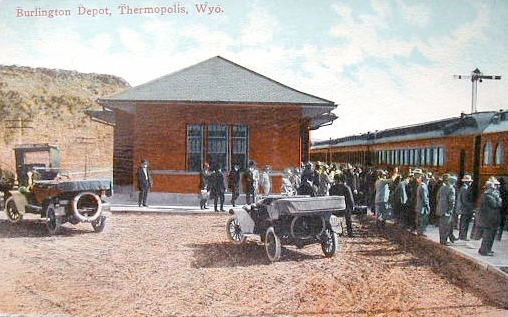 Burlington Depot, Thermopolis, approximately 1918
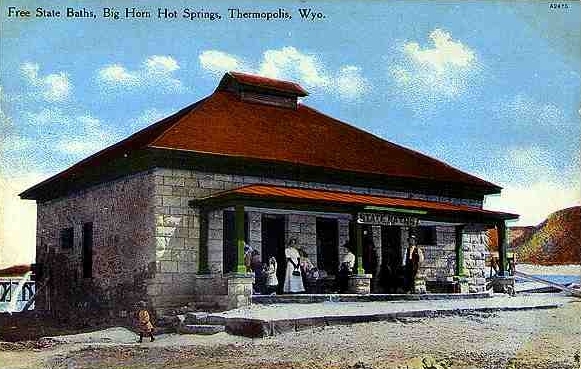 State Bathhouse, Thermopolis, approx. 1908
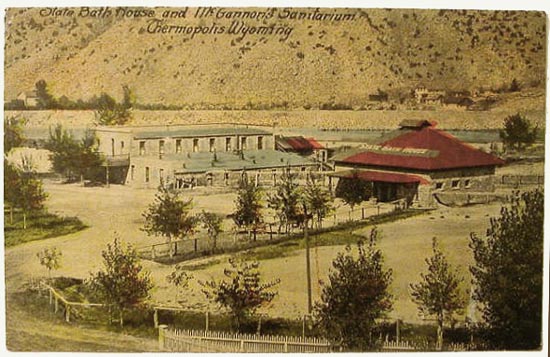 Foreground, State Bathhouse. Beyond, the McGannon Sanitarium. approx. 1908. The McGannon Sanitarium held forty beds. William McGannon also owned at one time the Pleasant View Sanitarium. In 1916, a suspension bridge was constructed to connect the Big Spring with the Fremont Spring, the Pleasant View, and the Elk Pasture. Later the suspension bridge also proided access to the Hopewell Hospital. The Hopewell later became the first county Hospital. 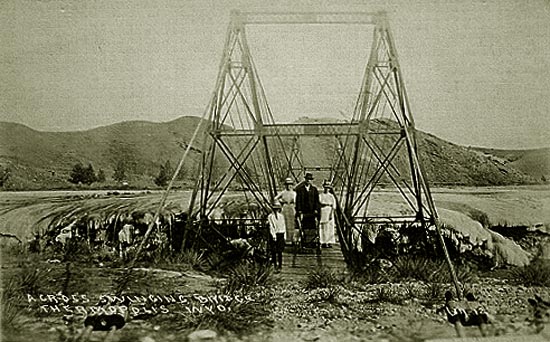 Suspension Bridge. 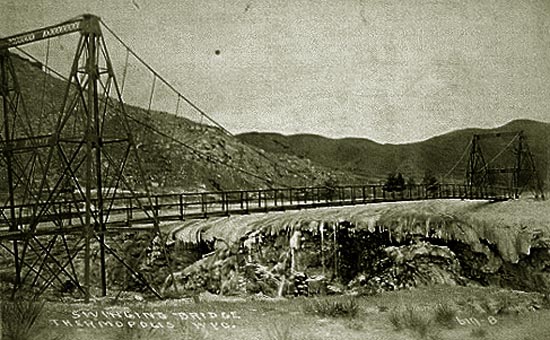 Suspension Bridge. Next Page Thermopolis continued. |